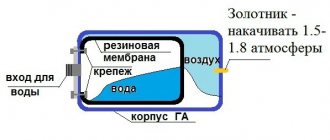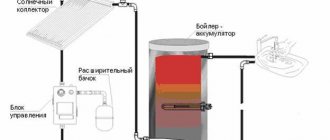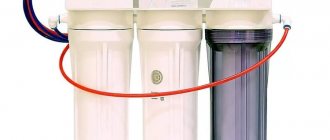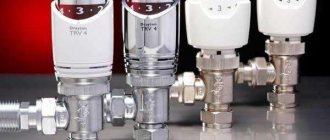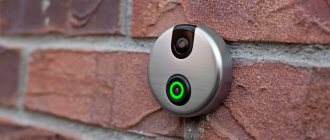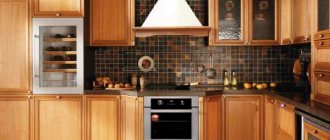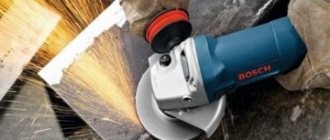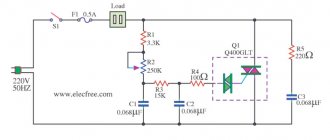Safety glasses for working with an angle grinder belong to personal protective equipment (PPE) for eyes with increased mechanical strength (marking S according to GOST 12.4.253-2013). This is due to the fact that they must protect the operator’s organs of vision not only from sparks and small particles of the material being processed and abrasive, but also from large fragments of metal and stone, as well as parts of the cutting wheel when it is destroyed during operation. The weight of such damaging elements can reach tens of grams, therefore, in accordance with GOST, protective glasses of this category are tested by the impact of a steel ball weighing at least 43 g. When cutting metal with a grinder, the glasses must also act as a light filter, weakening the brightness of the sheaf of sparks to the required limit. And when working with stone, concrete and ceramics, protect your eyes from fine dust. Using an angle grinder without personal eye protection is strictly prohibited, as is reminded by a special icon on the cutting discs and in the passports of the manufacturers of this tool.
Terms of use
The main danger for the operator lies in the angle grinder mechanism.
During operation, the grinder disk rotates and touches the surface being processed. At this moment, the master must hold it suspended with his own hands without the use of additional objects or assistants. That is why one careless movement can turn into a tragedy, breaking off and creating a sharp jerk of the instrument. This is why beginners are not trusted with professional tools. It’s better to start getting acquainted with an angle grinder with a device whose disk diameter is 115-125 mm
It is better to start getting acquainted with an angle grinder with a device whose disk diameter is 115-125 mm.
If you properly understand the safety precautions for working with an angle grinder, there is nothing to worry about. Safe work rules:
- During operation, the grinder is held with only two hands. In this case, you need to move it calmly, without pressing or applying force to the device.
- The operator stands firmly and firmly on his feet or knees while cutting or grinding. A comfortable position will help prevent falls and the device slipping out of your hands during sudden jerks.
- The power cable connected to the outlet is located behind the operator's body and should not be placed on the surface being processed. Otherwise, the resulting sparks can burn through it and cause a short circuit.
- It is prohibited to leave the grinder on and leave it. You can move around the room only when the device is turned off.
- If during operation there is a power outage, the power cord of the angle grinder is pulled out of the outlet, and the start button is moved to the off position.
- The diameter of the grinder disk must exceed the thickness of the surface being processed.
Dust extraction from an old saucepan
If sheet steel is available, then it can be used as a basis in the manufacture of a dust extractor for an angle grinder. When carrying out such work, you will need a welding machine. If you don’t have a machine, you can make a nozzle from an old aluminum pan. The principle of making a device from an aluminum pan is as follows:
- The basis is taken from a part of the pan with the bottom. The bottom acts as one side of the nozzle, and the other side is made by bending the sides of the pan
- It is recommended to use rivets to connect sheet aluminum
- A hole of the appropriate diameter is drilled in the wall of the dust collector for fastening to the shaft of the power tool
- To secure the hose from an industrial vacuum cleaner, you will need to make a hole on the outside of the side wall to which to attach the neck of a plastic canister, bottle or plastic tube. It can be secured to the aluminum base using threaded connectors with washers
- The reliability of the connection between the hose and the nozzle is ensured by a metal clamp
Read also: Why does a furniture stapler bend staples?
The principle of making a homemade nozzle is simple, so you can practice making casings from different materials. If you make a nozzle of two parts - movable and stationary, you will end up with a wall chaser for making grooves in concrete.
Common defensive ammunition
Various personal protective equipment are mandatory when using power tools. This is primarily due to the presence of chips, sparks and other elements that are formed during the work process and can cause harm to the human body. To avoid various types of injuries, people have developed simple and effective protective equipment that helps make the work process more comfortable and safer.
Eye protection glasses
This is a mandatory element of equipment when working with an angle grinder. It is advisable to opt for closed-type glasses that tightly fit the shape of the face and prevent foreign elements from getting into the eyes. This is due to the fact that the flight path of metal shavings, sparks and scale is unpredictable, and they can get under a protective mask or glasses. Therefore, before purchasing, it is advisable to always try on and adjust the product to suit yourself. The material used in the manufacture of the protective product also plays an important role.
It is important that the plastic has a high degree of strength and can withstand mechanical stress.
Masks
These are more reliable protective equipment than glasses, as they can cover not only the eyes, but the entire face. Unfortunately, in order to save money, some manufacturers use materials that are not of the highest quality, which affects the level of protection. Therefore, it is worth choosing masks from well-known manufacturers that look quite durable and have a protective mesh. This additional element is primarily intended to protect a person’s face when working with an angle grinder, since the cutting wheel can burst and fly into the eyes at great speed, and the mesh can stop it.
Mittens and gloves
It is impossible not to mention these most common, but no less important protective elements. When using an angle grinder, your hands are located in close proximity to the rotating disk and therefore require high-quality protection. Conventional gloves used in construction are not able to cope with the given protective task in all situations, since they are highly flammable and therefore quickly burn out from sparks, leaving burns on the body. When working with an angle grinder, it is better to use gloves made from rough leather or products with a rubberized base.
Also, if you have welding gaiters, which are made using durable suede, you can use them when working with power tools. Due to the high base of this type of gloves, they are able to protect not only the fingers and palms, but also the forearms.
Safety precautions
There are several types of protective equipment required when operating this device.
Individual protection means
A guarantee of eye safety when using an angle grinder is safety glasses . They have several varieties:
- Open type glasses. They resemble ordinary glasses for vision correction or sun protection, but have a denser structure and increased plastic thickness. These glasses protect your eyes from sparks and small fragments. Their disadvantage is their lack of protection from dust. When working with ceramics and stone, dust is generated that can cause eye irritation. In this case, the following type of glasses is suitable.
- Closed-type glasses. They fit tightly to the contour of the face and prevent dust from entering the eyes. They also protect your eyes from splinters and sparks. Some models have a ventilation system that prevents fogging of the inner surface of the lenses. This version of glasses will cost a little more, but it also has more advantages.
Glasses must be worn regardless of the nature of the material being cut or sanded.
Protective mask
Another safety device when working with an angle grinder is a protective mask .
It can be reinforced with a special mesh, which makes it stronger. This mask is much better than glasses, because it protects not only the eyes, but also the rest of the face. The main cause of injury is a split saw blade. Its fragments, flying at great speed, can injure not only the person working with the angle grinder, but also those nearby.
Principles of safe work
The presence of personal protective equipment undoubtedly reduces the risk of injury when using an angle grinder. But it is also worth remembering other safety requirements .
- Protective cover. This device must be on the angle grinder. Some careless operators remove the protection in order to put on a wheel of a larger diameter, which is not intended to work with this angle grinder. Sometimes the casing is removed in cases where it is necessary to use the grinder at an awkward angle. Such actions are unacceptable. Of course, the protective casing does not provide 100% safety, but in most cases it will protect you from injury. Recently, the protective cover for angle grinders has received a useful modification. It's called a dust extractor. From the name it is clear - this device helps direct dust particles in the opposite direction from the operator, which greatly simplifies the work.
- Hand protection. To prevent sparks and hot metal particles from coming into contact with the skin of your hands, it is recommended to use special welding gloves. Small sparks hitting the skin do not cause obvious pain. But when a large burning particle hits, it causes severe pain. At this moment, the hand may shake, thereby creating a traumatic situation. Gaiters will help prevent hot metal from getting on your hands.
- Selecting an abrasive wheel. To work with an angle grinder, you should only use a wheel that is suitable for it. If you use a circle with a diameter larger than expected, it may break without even touching
- with the cutting object. The fact is that different models of angle grinders have different speeds, and abrasive wheels have different speed resistance.
- You should also not use wheels with visible external defects, such as chips, deep scratches or cracks.
- It is forbidden to install a disk on the grinder for sawing wooden products. Firstly, it is dangerous - the saw blade may encounter a knot, which can cause the tool to be torn out of your hands. Secondly, the disk will very soon become unusable, because it is not adapted to such a load. The speed of a circular saw is much lower than that of an angle grinder.
- Sawing object. If the element being processed is small in size, you need to secure it with something. The best option for this would be to use a vice. It is strictly forbidden to saw the product with one hand while holding it with the other. In this case, the sawing element may be torn out of your hands.
If the product is large and installed motionless , it is necessary to ensure that the abrasive disc does not bite. General rules:
- Always unplug the angle grinder when replacing a blade. This is to prevent accidental startup.
- When choosing an abrasive disc, give preference to a trusted manufacturer.
- When working, make sure that the power cord is kept away from the sawing wheel.
- When using an angle grinder, avoid the possibility of hair and clothing getting wrapped around the rotating disc.
An ultraviolet filter is added to the lenses of protective devices.
The main task of safety glasses with an ultraviolet filter is to reflect the long ultraviolet wave UV(A). Such devices can be made with transparent glass or have different colors.
It is important to understand that they do not distort the main color of the image. On the contrary, glasses give the picture clarity; colored lenses can give the image a tint, but not color it in other colors
To manufacture UV protective devices, lenses with several layers of absorbers are used. These layers absorb UV radiation. There is also a polarizing layer. Its job is to protect the eyes from light reflected from objects. This combination of layers allows you to make the visible picture clearer and reduce eye fatigue when working.
Different models may have different degrees of protection. Manufacturers indicate all the information on the temples of the glasses or in the product passport. The UV 400 indicator indicates that the eyes in such models will be protected from A and B waves. With the B-15 marking, the protection will be 85%, and with the B-5 it will be 95%.
Among the features of glasses with an ultraviolet filter are:
- protection against eye opalescence during prolonged work with ultraviolet radiation;
- absorption of waves whose lengths are no more than 365 nm;
- reduction of eye strain;
- providing increased contrast when using powder and capillary non-destructive testing methods to study defects;
- protection against low- and medium-energy impacts;
- protection from solid particles and dust getting into the eyes.
Application of cover for cutting tiles
The manufacturing options for the casings under consideration are suitable for removing dust when processing concrete, brick, cinder block and wood. When cutting tiles, one important condition must be taken into account - the accuracy of the cut. When working, you need to see the mark along which the power tool is guided, thereby making the cut. It is impossible to see the disk through steel or plastic casings, so when using a device for tiles or ceramics, it is important to make it from transparent materials. The easiest option for this is a plastic bottle.
It is not difficult to make a casing from a plastic bottle, and to do this you will need to make one hole in the wall for installation on the shaft, and connect a hose from a vacuum cleaner to the neck. It does not matter for which brand of angle grinder the device is made - Bosch, Interskol, Makita, Diold and others. All tools from different manufacturers have a similar design, so the manufacturing principle is the same for all.
Through the transparent cover you can control the movement of the rotating diamond disk. Moreover, it is recommended to use solid discs for ceramics, since segmented ones contribute to the formation of chips, and as a result the material may be damaged. Moreover, cutting must be done in one pass, otherwise the cut of the tile will turn out uneven. Having made a homemade casing for an angle grinder under a vacuum cleaner, you can test it in action, making sure of the usefulness of such a device.
Materials
Eye safety is especially important if a person performs work in difficult conditions. Glass protects against chemicals, debris, glass. Such protective equipment is indispensable in the woodworking industry and construction.
Safety glasses can be tinted or clear. The color of the lens can be selected based on your own comfort. If you have to work in bright sun or with welding, then it is better to choose dark glasses.
Products can be in a plastic or metal frame.
Each model offered on the market has its own place in the safety rating. This rating means the lenses have been tested to withstand impact. The more expensive the glasses, the greater the mechanical impact their lenses can withstand.
On the market you can find models with adjustable straps or anti-fog lenses.
The described means of protection are of several types:
- glass;
- plastic;
- plexiglass;
- polycarbonate.
Scratches do not remain on the glass over time, but the problem is that users often complain that the material is heavy and causes discomfort. Glass is also prone to fogging.
Plastic is lighter compared to glass. It is also less prone to fogging. The problem is that scratches quickly appear on it, as a result of which visibility is reduced.
Plexiglas is widely used in medicine and aviation. It owes its popularity to its high strength. If it is destroyed, it is without fragments. Disadvantages include poor resistance to solvents and other chemicals.
Polycarbonate is another option for safety glasses. It does not fog, does not scratch and is lightweight. These glasses are stronger than the other two options, but also more expensive.
Stand for grinder + (Video)
This device is a small machine with which you can easily, safely and very accurately cut metal pipes, profiles or rods. It consists of a base or small table attached to the ground or to a metalworking table.
The machine is assembled in a simple sequence:
- install a hinge on the base;
- We weld the supporting pipe to the hinge;
- We attach the U-shaped plate for attaching the grinder to the pipe;
- We put a rubber handle on the supporting pipe;
- install the disk and check its position.
Read also: Lamp above the bed in the bedroom
As a result of some simple work, we got a machine or stand for an angle grinder. Now the grinder can rise and fall down on a hinge onto the part installed for cutting. In order for the angle grinder to rise up without loads, we install a spring on the pipe.
It is necessary to install two fixing angles on the table. At the base of one corner we make a groove around the circumference for a bolt. It will be needed when a pipe or profile needs to be cut at a certain angle. Then we install this corner with a slot at the same angle to the plane of the grinder’s cutting disc.
Parallel to the corner with the arc slot, we install a corner that can be moved towards the part to fix it on the table. The pipe or profile will simply be inserted between two corners. This is enough to perform fast and precise cuts.
By installing a supporting transverse metal bar on the machine table, you can strip the material using a steel brush mounted on the angle grinder shaft.
Design features of safety glasses
You can divide all existing safety glasses into several groups. The distribution occurs according to the type of material, design features and coverage area.
By lens material
Several materials are used to create protective glasses lenses. The most common of them are:
- Mineral glass. It has been used since the days of the USSR. The main advantages of the material are its high light transmittance and resistance to light impacts (damage, chips, scratches). The main disadvantage is the fragility of the product and the possibility of injury from chips.
- Organic glass (plexiglass) and plastic. The ability to transmit light of these materials is lower than that of mineral glass, but they are much more flexible. This allows you to withstand fairly strong impacts, and in the event of breakdowns, fragments practically do not appear. But due to a large number of scratches on the surface, the material may become matte, which will make it unsuitable for use. Therefore, the service life of glasses made of organic glass and plastic is not so long. Also, these materials are easily destroyed when exposed to chemicals and at high temperatures (200 degrees).
- Silicone. This material is the most flexible of all listed. It can easily withstand even very powerful blows, but does not cope well with minor damage. Silicone also quickly deteriorates when exposed to high temperatures (sometimes it can withstand up to 300 degrees, but most often it begins to lose its properties at 200). The surface becomes cloudy over time, so the service life is also quite short.
Some expensive models use combination lenses. In them, several materials alternate in layers.
By way of putting on
There are also differences in how glasses are attached to a person’s head. You can put them on yourself in one of two ways:
- Classic with temples. When purchasing this model, the first thing to look at is the possibility of adjusting the arms. It is also necessary to take into account that during active work the glasses may fall or simply move out of place. This can create dangerous situations while performing tasks.
- Sports. Such models are attached with a wide elastic band that goes around the head.
Some modern glasses provide two methods of fastening at the same time. If a special mask is provided for the work, then the fastenings can be supplemented with a small braid passing through the middle of the head.
According to the size of the protected face surface
There is no official classification of glasses on this basis. But they can be divided into several groups conditionally:
- Only the eyes themselves with a small space around them are protected;
- glasses overlap the eyes with part of the adjacent side of the face;
- The entire face is covered with a mask or shield.
There are a huge number of models on sale now. They can either limit or increase the area of protection of the nose, bridge of the nose and other parts of the face.
By size of review
There are also several subtypes of glasses with different viewing angles. They can significantly reduce or expand the operator’s angle of view:
- Additional lenses. These details are located on the temples of a person; they act as an addition to the central part of the lens of the glasses. With their help, it is easy to see objects with “lateral vision”.
- Curved shape. These models do not have additional transparent elements, but thanks to their semicircular shape they are able to expand the viewing angle to the sides.
- Cuts in the arms. These parts are slots in the side. They slightly expand the view, but do not prevent additional dust and foreign objects from entering the eyes.
- Wide transparent temples or frames. This subtype is made entirely of one material. If they are made with a frame, then the eyes receive additional protection from debris from all sides.
- Front view only. This type is equipped with the most modest visibility. It protects the eyes from all sides, but reduces the ability to see from the side.
Safety glasses for working with an angle grinder are divided into several groups. For example, they differ in the color of the lenses, the ability and method of ventilation (to reduce fogging), and tightness. For people with poor vision, it is allowed to use their medical model for protection. In such a situation, remember that models with diopters are not equipped with additional side protection. They cost much more, but are not resistant to damage. Because of this, if you have poor vision, it is recommended to use safety glasses along with lenses, or wear a medical model underneath them.
Protective face shield “NBT-01.U1” with PVC screen, 400x200mm 11084
Model AK-1 is an OLFA knife designed for artistic work. Thanks to its unique “handle” shape, it performs precise work with ease. The OLFA knife handle body is made from recycled and reclaimed plastic.
The standard OLFA blade angle is 32.8 degrees.
The AK-1 artistic knife comes with 25 spare blades. Changing the blade is easy and quick.
The AK-4 model is also an art knife that can be used as a professional tool. This model has a rubber anti-slip handle that prevents the knife from slipping in your hand and hand fatigue during operation. This model comes with 3 different blades for different types of work, and it is also possible to install 2 types of saw blades.
The OLFA SAC-1 knife model is a knife with break-off segmented blades. The acute blade angle of this model is 30 degrees. In cases where you need to constantly keep control of the cutting edge, this model is best suited. The case of the SAC-1 model is made of stainless steel.
The OLFA OL series of knives is a convenient tool for processing and cutting carpets. To prevent the blade from oscillating during cutting, a special holder is provided. The end of the handle has a blunt protrusion for holding the carpet.
The SK-4 model is a knife of increased safety, due to the fact that if contact with the cutting surface is lost, the blade automatically returns inside the body. This knife is widely used for cutting various packaging, cardboard or vinyl.
The CMP-1 knife is a convenient knife for cutting circles on various materials. Thanks to the regulator, it is possible to cut circles from 1cm to 15cm. To avoid leaving a mark in the middle of the circle, you must use a special lining for the pin.
Model CMP – 1/DX is a knife with a compass and ratchet. The cut circles can be from 1.6cm to 22cm in size. To avoid leaving a mark in the middle of the circle, you must use a special lining for the pin.
The CL knife model is designed for cutting cardboard, removing staples (using special fittings), and guides. This knife has a cutting depth regulator.
The RTY-2/P series has high-quality original round blades. This blade can cut any type of fabric, paper, rubber, film, etc.
The RTY-2/DX also has round blades and can easily cut through a variety of materials. A special feature of this model is that the blade extends when the handle is held in the hand. It is possible to use additional round shaped blades.
CMP-3 is a knife with a compass and a blade that allows you to cut circles from 4cm to 22cm on paper and fabric.
The CHN-1 knife is designed for cutting quilted fabric, and has guides for various types of fabric. If the cutting edge becomes dull, you can replace the edge by turning the knife wheel (there are 24 cutting edge positions on the blade).
The cutting mat RM-30×30 is designed to protect the table surface. In addition, the mat rotates 360 degrees, which allows you to work from different angles. The mat has markings in the form of a coordinate axis and different angles.
The P-800 knife model is designed for cutting acrylic, vinyl chloride and other plastic sheets.
The MC-45/DX knife is designed for making linings for illustrations and photographs. This knife can cut bevel edges on thick paper. This knife model comes with a ruler with an anti-slip side. With this knife you can easily cut out various frames.
instrumentale.ru
Beware: Bulgarian! Existing remedies
Personal protective equipment must be present, as shavings, sparks and other elements that can harm health are constant companions. To avoid this, people have come up with the simplest rules and means of protection that will help make work comfortable and safe.
Glasses
Since scale and sparks have a complex flight path, they can easily get under glasses or a mask, so you need to think about protecting your eyes before starting to work with an angle grinder.
Mask
A properly selected mask is a more reliable means of protection than glasses, since it covers and protects the entire face, but you should pay attention to many criteria. Nowadays, the manufacturer is trying to save significantly on the production of such masks, and the quality and level of protection suffers greatly as a result.
Nowadays, the manufacturer is trying to save significantly on the production of such masks, and the quality and level of protection suffers greatly as a result.
The danger of working with an angle grinder is that the grinding disc can break off the mount and fly into the worker, and such a mask should stop the disc and fully protect the user’s face.
Many are accustomed to thinking that instead of a special mask, a “turner’s shield” can be used, but this opinion is erroneous, since such a mask is designed to protect against small chips and minor scale.
Mittens and gloves
An equally important element of protection. During operation, your hands are close to the disk, so reliable protection from sparks, scale, chips and splinters is required.
There are cotton construction gloves, specialized gloves made of rough leather or those with a rubberized base.
Also, if available, you can use leggings for welding work; they are made of durable suede and are designed specifically for such conditions. They have a high base that will protect not only the palms, but also the forearms.
Safety precautions when working with angle grinders
Compliance with solid waste is the key to safe work and high-quality results without negative consequences for health and life.
- Using a protective shield when working with an angle grinder is an important component of the process that cannot be ignored;
- In addition to the mask, before work, put on protective gloves and a suitable suit (preferably a special one) to protect not only your face, but also the rest of your body;
- For each type of material, use only a specially designed disc;
- Check tool fastenings and guards before starting work;
- Before work and after changing the attachment, check the tool at idle speed;
- Work in a comfortable and stable position;
- The most dangerous thing when working with an angle grinder is the rupture of a disk rotating at high speed. Splinters can cause fatal damage, so it is extremely important to purchase high-quality protective materials and use the machine in accordance with safety precautions.
Under no circumstances remove the protective casing from the angle grinder to lighten the weight of the tool!
Remember, life and health are the most important. Do not neglect safety precautions and use protective equipment to avoid damage to the skin and eyes.
Before you start working with an angle grinder
When starting to work with any power tool, including an electric grinder, you need to concentrate as much as possible. You can't take on a job without being prepared. Fatigue is the first cause of negligence, which can lead to unpredictable consequences.
The presence of a protective casing and glasses are mandatory conditions, without which you cannot begin work. Sparks, flying particles of abrasive material, metal and scale always accompany any process in which an angle grinder is used. If such particles get into the eyes, serious health problems can occur.
It is advisable to use glasses or a mask with a closed design that replaces them. The spread of sparks and metal shavings occurs along an unpredictable trajectory and you can never predict whether they will get under the mask or not if it is an open type. It’s good if the mask has a protective mesh, since impacts from fragments can be so powerful that they can pierce plastic.
The presence of a casing on the tool provides the first protection that stands between a person and a rapidly rotating cutting wheel. Moreover, the destruction of the latter is a frequent occurrence. Most people who regularly use an electric grinder have repeatedly encountered this problem. Most often, the circle is destroyed when a metal workpiece becomes jammed in the resulting slot.
The main purpose of the protective casing is to prevent the emission of sparks and other particles towards the person using the angle grinder. In this case, the casing is secured in such a way that it does not rotate spontaneously or shift to the side. And no matter how much many builders would like to remove the protective casing to make working with the tool easier, doing this is strictly contraindicated. Neglecting this rule can lead to unpredictable consequences for human health.
How to make a casing for an angle grinder for a vacuum cleaner - the best ways
The advantages of making your own nozzle are as follows:
- There is no need to spend money on purchasing a device
- Possibility to make a device according to your requirements
- No need to travel around looking for the right device
There are many options for making a casing for an angle grinder for a vacuum cleaner, and when making it yourself, it is not at all necessary to make the kind of equipment that has already been invented. It all depends on personal abilities, capabilities, as well as the available material from which the nozzle is planned to be made. To make the work of making casings easier, let’s consider several options for converting an angle grinder into a vacuum cleaner.
Pros and cons of glasses and masks
When thinking about what to choose – glasses or a mask – you need to pay attention first of all to the features of the repair work. So, glasses have the following advantages:
- low cost;
- good degree of protection;
- large range of products;
- Ease of use.
Glasses are suitable for work in which the likelihood of falling into fragments is minimal. They do not protect the entire part of the face, but only the eyes - this is their main drawback.
However, masks have other advantages:
- the ability to protect the entire face;
- many modifications and additional means of protection (fasteners, belts, rotating mechanisms, protective shallow stacks, etc.).
However, masks also have their drawbacks. It is problematic to work in them for a long time, since most of the face is covered, which will lead to sweat. The masks are equipped with holes for ventilation, but when working at temperatures they are unlikely to save you. And the cost of masks is more.
Hand scythes for grass. Manufacturers and prices
Contrary to popular belief, good scythes can cost more than modern mowers and basic trimmers. This is due to the high cost of the blade and the high labor costs for careful processing and sharpening of its surface.
Of course, you can buy a grass scythe for 500 rubles, or even 300 rubles, but these are Chinese fakes that have nothing to do with a professional tool. Good braids cost several thousand rubles, and professional, forged ones cost even more. However, there are no alternatives to them yet, and many farmers prefer to buy just such products.
How do safety glasses work?
Most models of safety glasses consist of two elements:
- eye protection;
- securely attached to the head.
The design may differ in the presence of ventilation elements. They are necessary to prevent glasses from fogging up from the inside during prolonged use. Fasteners, linings, and seals are also allowed, which make the use of these products more versatile and comfortable.
The main task of protective equipment is to protect your eyes from sparks, metal shavings, scale, dust and suspensions that form while working with an angle grinder. Also, the purpose of the glasses is to create a barrier between the instrument and the eyes in case of destruction of the first.
The principle of operation of such glasses for angle grinders differs from their type. If the glasses are open, their effect is reduced to creating an additional protective screen made of durable plastic. At the same time, they leave gaps between the edge of the glass and the face.
Small particles of dust and smoke can get into these gaps. Open type products are characterized by low quality of protection. Their price on the market is low.
Closed-type devices have a more complex structure. They are a device that fits tightly to the face and reliably protects it from dirt. Their protection is more reliable.
The main disadvantage of such glasses is that the inner glass fogs up. To prevent this from happening, manufacturers apply a special coating to the inner glass. Installation of direct and indirect ventilation is also provided. Air supply partially solves the problem of glass fogging.
Among the open and closed type safety glasses, there are models with polarizing coating and light filters. Their operating principle is to protect the eyes from harmful radiation of different wavelengths. On the market you can find glasses in yellow, brown, black, gray, and pink colors. Depending on the shade, they transmit one or another light spectrum.
Care and storage rules
Most models, even made from durable material, quickly wear out and fail. Therefore, before each use, you should carefully inspect the frame for damage. If there are severe chips, deep cracks and scratches on the surface, and the elastic band is stretched and loose, it is better to purchase a new model.
To remove adhering dust and dirt, the surface should be periodically wiped with a piece of damp cloth. The hardware store sells special material impregnated for disinfection. It is better to store the protection in a special case that protects it from damage.
To work with an angle grinder, special safety glasses are used. They protect the organs of vision from foreign objects and dust. There are many models on sale, among which it is not so easy to choose the right glasses. When purchasing, it is better to rely on the material of manufacture, price, ease of use and other characteristics. The more carefully you care for your safety glasses, the longer they will last.
Review of the best safety glasses models
Let's look at the options for the best models. The leaders in this production are the manufacturers DEWALT, POCOM3 and UVEX.
For open models we turn to POCOM3 and UVEX.
POCOM3 HAMMER ACTIV: open type, models are available in three versions: transparent; with darkened lenses; with lenses that increase contrast. Wide view, chemical resistant plastic, protects against particles (120m/s). The cost is approximately 170 rubles. Since the price-quality ratio is most optimal in models of this brand. Customer reviews indicate that the glasses themselves do not interfere during work, although they reliably protect from dust.
UVEX PHEOS and I-VO are popular options for open eyewear from the global market leader in PPE.
These models are available with lenses of different colors - to suit certain needs. UV filter, protects against particles (45 m/s) and chemicals. The price varies 500-800 rubles.
Next, let's look at closed-type glasses. Buyers named the main advantage of such models as extensive adjustment options to suit the user’s size.
But there is also a minus; reviews indicate a flaw in the “anti-fogging” function. In addition, when choosing closed-type models, a problem also arises for people with glasses, because they also need to wear safety glasses over optical lenses.
There are two options here: either buy such models of safety glasses, where the lenses plus a corrective one, or choose spacious models with the ability to wear glasses under them.
UVEX ULTRAVISION – closed-type glasses with impact-resistant lenses and ANTIFOG anti-fog protection. Indirect ventilation. It is possible to wear over corrective glasses. Protection from dust and particles (120m/s) as well as from chemicals. substances. Adapted to attach an optional protective face shield. The cost varies from 900 to 1400 rubles.
How to make a casing for a vacuum cleaner for grinding with an angle grinder
If a grinder is used not only for cutting, but also for grinding, then to prevent the formation of dust in the room it is necessary to make a protective casing that will have a special design. Such a casing is somewhat more difficult to produce, but it is quite possible. As a base, you can use a five-liter plastic bottle, a CD container or a plastic bowl of a suitable size.
When making a casing for an angle grinder for a vacuum cleaner for grinding, the following factors must be taken into account:
- The working area will not be at the bottom of the tool, but at the side. To do this you will need to make a device with an open side part
- Make a reliable bracket for connecting the device to a power tool
- Connect the hose from the vacuum cleaner to the homemade workpiece
- To ensure contact of the sandpaper with the surface being treated, the walls of the device must be shorter than the protrusion of the abrasive nozzle
When performing work, you will need to use a hot glue gun. With its help, the production of ideas is not only simplified, but also accelerated several times. The result is an attachment for a grinder for grinding wood, metal and other similar materials. The entire process from A to Z for making a cover for grinding is described in the video material.
Protective shields
Special shields, or masks, for working with an angle grinder seem to be more reliable, but their cost is higher. Professionals prefer this category of protective equipment, because they protect not only the eyes, but the entire face. Masks come in different types and are made from different materials, which affects their appearance and cost.
The masks are attached using special belts or other fasteners and are held tightly on the head; the protective glass protects against the ingress of scale and dust particles and materials. Some shields have a visor that protects the forehead. In addition, shields are made with a special fine mesh - this is additional protection, including from damage to the mask itself during operation, which increases its service life. Overall, a face shield is more durable than regular glasses.
Comparison with protective masks when their use is necessary
Masks are analogues of protective devices. When working with an angle grinder, using a mask is important when you have to work with the tool for a long time every day. The first difference between a maxi and glasses is its size. It protects not only the eyes, but also the entire part of the head. Masks for working with an angle grinder are in demand when an angle grinder is the master’s main tool.
The second difference between the mask is its cost, which is several times higher than the price of the devices in question. Often masks are additionally equipped with protective nets over the glass, which allows for maximum protection of the face and head as a whole. When using an angle grinder, it is important to follow safety precautions, which will allow you to complete the work you started without getting injured.
Traditional methods for preventing glasses from fogging
Folk recipes are simple and accessible, but have their own nuances. Here are the most popular:
In this article
- Traditional methods for preventing glasses from fogging
- Tips for caring for foggy glasses
- Professional anti-fog glasses
- A piece of solid soap. The lenses of the glasses are rubbed with a dry piece of any scented soap, then the applied mass is evenly distributed over the lens with a soft cloth, while drying the glass (minus - it is difficult to apply an even layer, so the view will deteriorate on rainy days);
- Shampoo. Add warm water to the hair wash in a ceramic bowl in a 1:1 ratio and mix thoroughly until a homogeneous mass is obtained; then the solution is applied to the glass with a piece of clean soft cloth, and wiped dry with another dry cloth (this may leave barely noticeable rainbow stains, which will contribute to the appearance of glare and make it difficult to see);
- Spray for car windows. It is enough to spray it on the inner surface of the glasses lenses and wipe dry (you should remember that auto chemicals are not intended for people; it is undesirable to use such dangerous products);
- Glycerin (liquid). A soft cloth is generously moistened with the solution and the glasses are thoroughly rubbed on both sides, then the glasses should be allowed to dry naturally, and then polished with a dry soft flannel cloth (this method of combating glass fogging takes a lot of time);
- Toothpaste. Squeeze out 1 pea on both glasses from the inside and rub thoroughly with a napkin; after drying, the remaining paste is removed with a soft cloth (however, it is very difficult to clean glasses of dried toothpaste without damaging the surface of the glass);
- Shaving foam. Apply to glass with clean fingers and wipe with a dry cotton pad until completely dry (this method is the least effective due to the texture of the foam being too soft).
All folk remedies are free of charge, because they are available in any apartment, but the above methods are quite time-consuming. Various detergents often have to be reapplied to the glass, after first removing the previous layer of soap or shampoo. It is also inconvenient that mixed solutions of detergents and water cannot be stored; the ingredients will need to be mixed in accordance with the proportions before each application. Folk recipes are quite applicable as a one-time use when the glasses in your glasses fog up and you need to quickly take at least some action.
Don't look at the bright light!
Eye protection during plasma cutting is a question that interests many. Let's look at the problem in more detail. When cutting, a plasma arc, like any electric arc, emits a wide range of electromagnetic radiation, which goes all the way: from infrared light (passing through the visible spectrum) to its ultraviolet range. The electric current during plasma cutting can be very intense, ranging from 100 to 800 Amperes. It goes without saying that looking at the arc can easily cause eye damage. If a worker's retina is exposed to bright light for a long time, the consequences may be more serious. How to avoid this?
Recommended eye protection for plasma cutting
There are several important, good sources that have standards and recommendations that any good welder should know. These include OSHA and ANSI standards, as well as OST 5.9823-80 “Electric welding works. Safety requirements".
Let's consider foreign standards. OSHA is the US Federal Occupational Safety and Health Agency. Their fact sheet, “Protecting Eyes from Radiant Energy During Welding and Cutting in Shipbuilding Operations,” has guidelines for welder eye protection citing data from ANSI (American National Standards Institute). The eclipse degree numbers refer to safety glasses or welding helmets. The higher the number, the darker the glass.
ANSI and the American Welding Society (AWS) have published an even more detailed table, “Safety in Welding, Cutting, and Related Processes (ANSI Z49.1: 2005).”
In both cases, the guidelines suggest a rule of thumb: “Start with the shade that is darkest to show the weld area. Then we move to a lighter shade that gives enough representation of the welding area without going below the minimum.”
ANSI recommendations for SMAW, GMAW and FCAW welding are in the shade range with shade number 10 - 14. How does this apply to a welding operation? When welding, you basically stand and look at the welding area through your helmet as usual, and you can manually operate the welding torch, which is just a few centimeters from your face.
But the operation of a CNC machine is slightly different:
- the operator is much more likely to be further away from the arc;
- the welder must move around, so he must be able to clearly see his surroundings (this is relatively dangerous in a welding helmet);
- the operator must have visual ability to control the machine while the arc is on;
- The welding arc moves, so the operator will not always be able to see in its direction.
